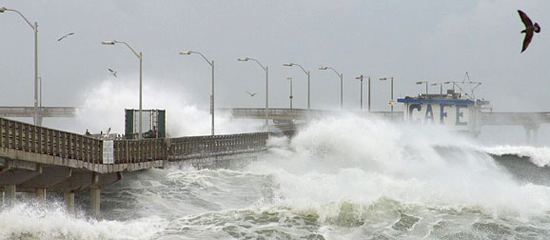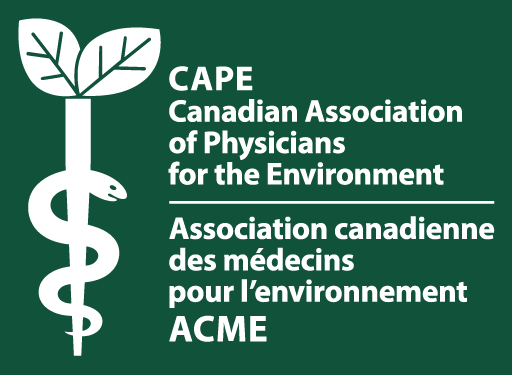
Prepared by Kim Perrotta, Executive Director, CAPE , March 29, 2016
Climate change is no longer a distant problem. It is happening. And we only have a few decades to make the dramatic changes needed to avoid impacts that could be devastating (Carrington, 2016). This is the declaration of some of the world’s leading climate scientists.
A Flooded World
In March, nineteen climate scientists released a new study that indicates that climate change is happening much more quickly than previously predicted. This study, which combined modern observations, modelling, and the examination of geological formations created thousands of years ago, is predicting that global sea levels could rise by several meters within 50 to 150 years if greenhouse gas emissions continue to grow (Hansen et al., 2016). The lead author, former NASA researcher James Hansen, maintains that this multi-meter increase in sea levels could occur even if we manage to limit global temperature increases to the 2 degree C target set by the United Nations Framework on Climate Change (UNFCC) (Milman, 2016). He and his colleagues are pushing for a more aggressive target.
Another study, released in February, predicted that 20% of the world’s population will have to migrate away from coasts swamped by rising oceans unless we can halt climate change in the very near future (Clark et al., 2016). Under this scenario, cities such New York, London, Rio de Janeiro, Cairo, Calcutta, Jakarta and Shanghai would all be submerged (Carrington, 2016). These changes, which would be devastating at a social and economic level, are expected to last for thousands of years (Hansen et al., 2016; Clark et al., 2016).

These researchers are making a clarion call; they are calling for immediate action to save the world for future generations. They say that this future may still be avoided if fossil fuel emissions are rapidly phased out and agricultural and forestry practices are improved (Hansen et al., 2016). But time is running out.
Action Needed in Canada
To keep the global temperature increase below 1.5 degrees C (relative to pre-industrial times), the International Panel on Climate Change has indicated that greenhouse gas emissions must be cut by 70 to 95% by 2050 relative to 2010 (IPCC, 2015).
In 2010, Canada emitted 707 megatonnes (1 million tonnes or MT) of greenhouse gases; 23% from the oil and gas industry, 24% from the transportation sector, 14% from the electricity sector, 12% from buildings, 11% from energy intensive industries, 10% from the agricultural sector, and 7% from waste and other sectors (Canada, 2016). In order to meet our obligations to slow climate change, we will need to transform our society. We will need to cut our reliance on fossil fuels. We will have to revolutionize our transportation sector and redesign our communities to support walking, cycling, and public transit. We will need to invest in renewable energies, increase the energy efficiency of our buildings and industries, and change the practices in our agricultural sector.
While the electricity sector is responsible for only 14% of all Canada’s emissions, it is seen as the sector from which reductions can be made most quickly. Since 2005, Ontario has reduced its emissions by close to 20%. Almost all of these reductions can be attributed to the closing of its six coal-fired power plants (Canada, 2016). In 2015, Alberta announced its decision to accelerate the closure of its coal-fired power plants. By doing so, it can cut its emissions by 17% by 2030 and reduce Canada’s total emissions by 6%, while producing air quality-related health benefits worth $300 million per year for its residents (Pembina et al., 2013).
References:
- Canada. 2016. Canada’s Second Biennial Report on Climate Change.
- Carrington D. 2016. Sea-level rise ‘could last twice as long as human history’. The Guardian, Feb 8, 2016
- Clark P et al. 2016. Consequences of twenty-first-century policy for multi-millennial climate and sea-level change. Nature Climate Change. February 8, 2016
- Hansen J et al. 2016. Ice melt, sea level rise and superstorms: evidence from paleoclimate data, climate modeling, and modern observations that 2 degrees C global warming could be dangerous. Atmospheric Chemistry and Physics. March 22, 2016.
- International Panel on Climate Change (IPCC). 2015. Climate Change Synthesis for Policy Makers.
- Milman O. Climate Guru James Hansen warns of much worse than expected sea level rise. The Guardian. March 22, 2016.
- Pembina Institute, CAPE, Asthma Society of Canada, Lung Association of Alberta and Northwest Territories. 2013. Costly Diagnosis: Subsidizing coal power with Albertans’ health.
